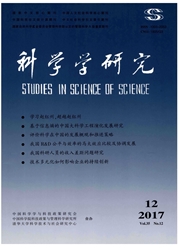

 中文摘要:
中文摘要:
基于产品质量提高型创新视角,将技术溢出水平、产品水平差异与垂直质量差异等因素一起纳入分析框架,构建三阶段动态博弈模型,探讨了不同研发模式下企业研发投入决策和政府最优补贴政策。结果显示:政府补贴有利于提高企业研发投入的积极性与社会福利水平,不会产生“挤出效应”;技术溢出水平与产品差异化程度均对不同研发模式下政府最优补贴强度的影响有较大差异;在政府最优补贴强度下,研发竞争与研发合作模式中企业的研发投入、产品质量及社会福利水平是相同的,企业倾向于选择利润最大化的研发模式。算例分析结果进一步验证了模型的有效性。为此,企业自身应加强研发投入,提高产品质量竞争力,而政府则应针对不同的研发创新模式与产业周期特征制定合理的补贴强度区间,同时应加强企业补贴资格审查制度建设,提高创新激励效率。
 英文摘要:
英文摘要:
Based on the perspective of product quality improvement innovation, the paper puts the technological spillover level, product level difference and vertical quality difference together into the analysis framework, and constructs a three - stage dynamic game model to discuss the R&D investment decision and government optimization under different R&D model. The results show: government subsi- dy can improve the enthusiasm of R&D investment and social welfare, and will not produce " crowding - out effect" ;The level of tech- nological spillover and the degree of product differentiation both have different effects on the optimal subsidy intensity under different R&D models; Whether in R&D competition model or R&D cooperation model, enterprise R&D investment, product quality and social welfare level are always the same under the optimal subsidy intensity, and enterprises prefer to choose the R&D model of profit maximi- zation. The case analysis verifies model validity. Therefore, the enterprise itself should strengthen R&D investment to improve product quality competitiveness, and the government should formulate a reasonable range of subsidy intensity for different R&D innovation modes and industry cycle characteristics to improve the efficiency of innovation incentive by strengthening the construction of enterprise subsidy qualification examination system, but also should strengthen the enterprise subsidy qualification examination system construction to improve innovation incentive efficiency.
 同期刊论文项目
同期刊论文项目
 同项目期刊论文
同项目期刊论文
 期刊信息
期刊信息
